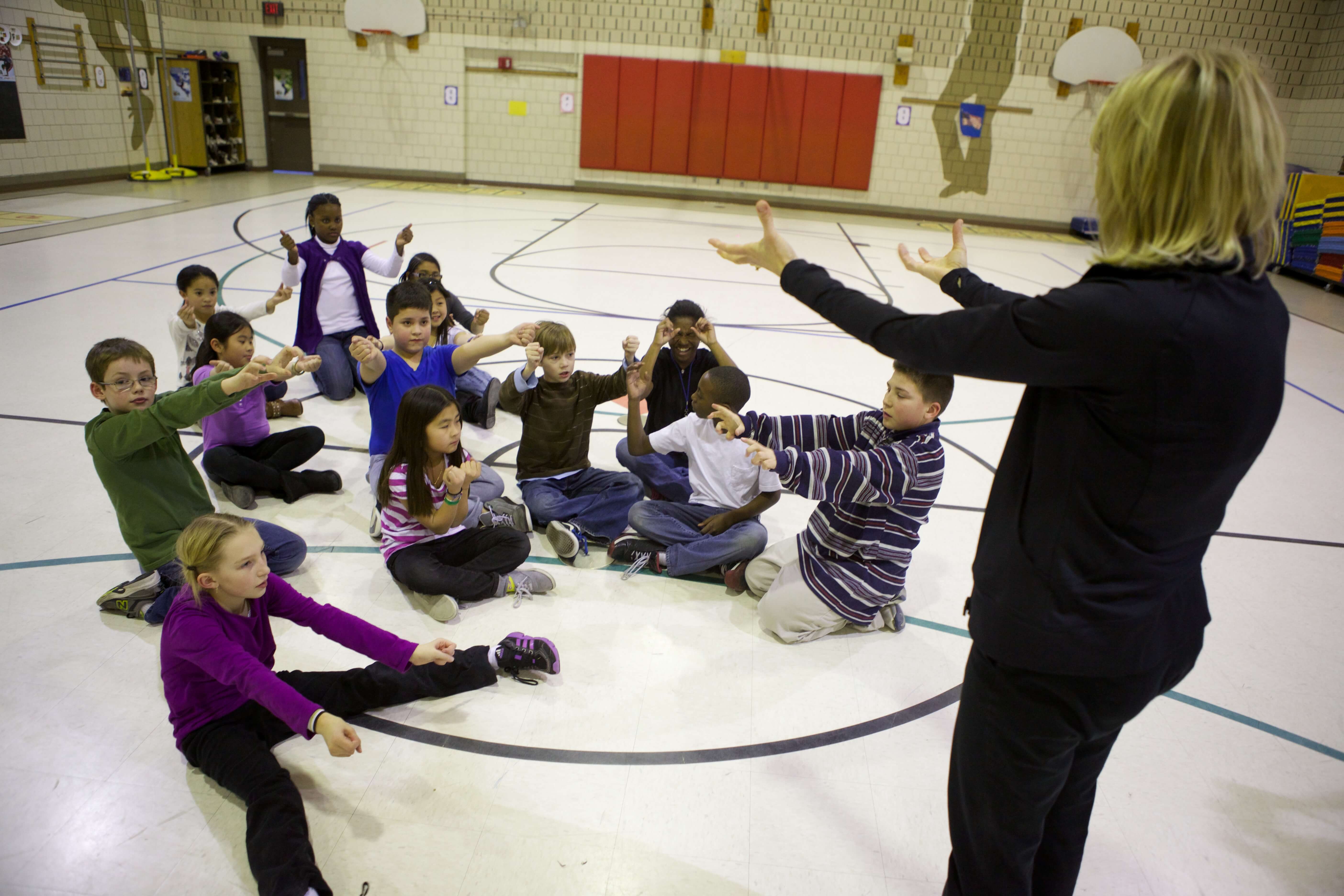

Five minutes before the class is ready to go to the gym or outside to do the physical activity, have the students do the following hand/heart pump.
The class should stand up, push their chairs in, if appropriate, and raise both hands to shoulder level. Open and close each hand continually: close the hand, and then open it all the way.
Continue this pattern (open, close, open, etc.) for 5 minutes. During this time, keep watching the students. If someone stops, remind him or her to keep going.
After 1 minute, ask if they are tired of doing it yet. If no one is tired of it yet, continue to do it for 5 minutes.
Ask again if anyone is tired of doing this hand pumping yet.
When someone finally announces that he or she is tired, explain that this hand pumping action is just like the heart. The heart is continually pumping and cannot stop at any time. When it is tired, it has to keep on going.
Explain that this is one reason that you have to keep feeding it good, healthful food. The heart needs good food to keep it going, whether it is tired or not. If there is too much fat around the heart and other parts of the body, it makes the heart work harder in order to get the blood to all parts of the body.
Make sure to eat the right foods so that the heart can work well. Avoid eating too much, or the wrong types of food, because the heart has to work all the harder to do its job.
As you are walking to the gym or outdoors, have the students continue to pump their hands all the way there. Gather the students to talk about the activity that they will next be doing. Have them continue to pump their hands. As you notice students “dropping out,” remind them to keep doing it.
 Back to Top
Back to Top
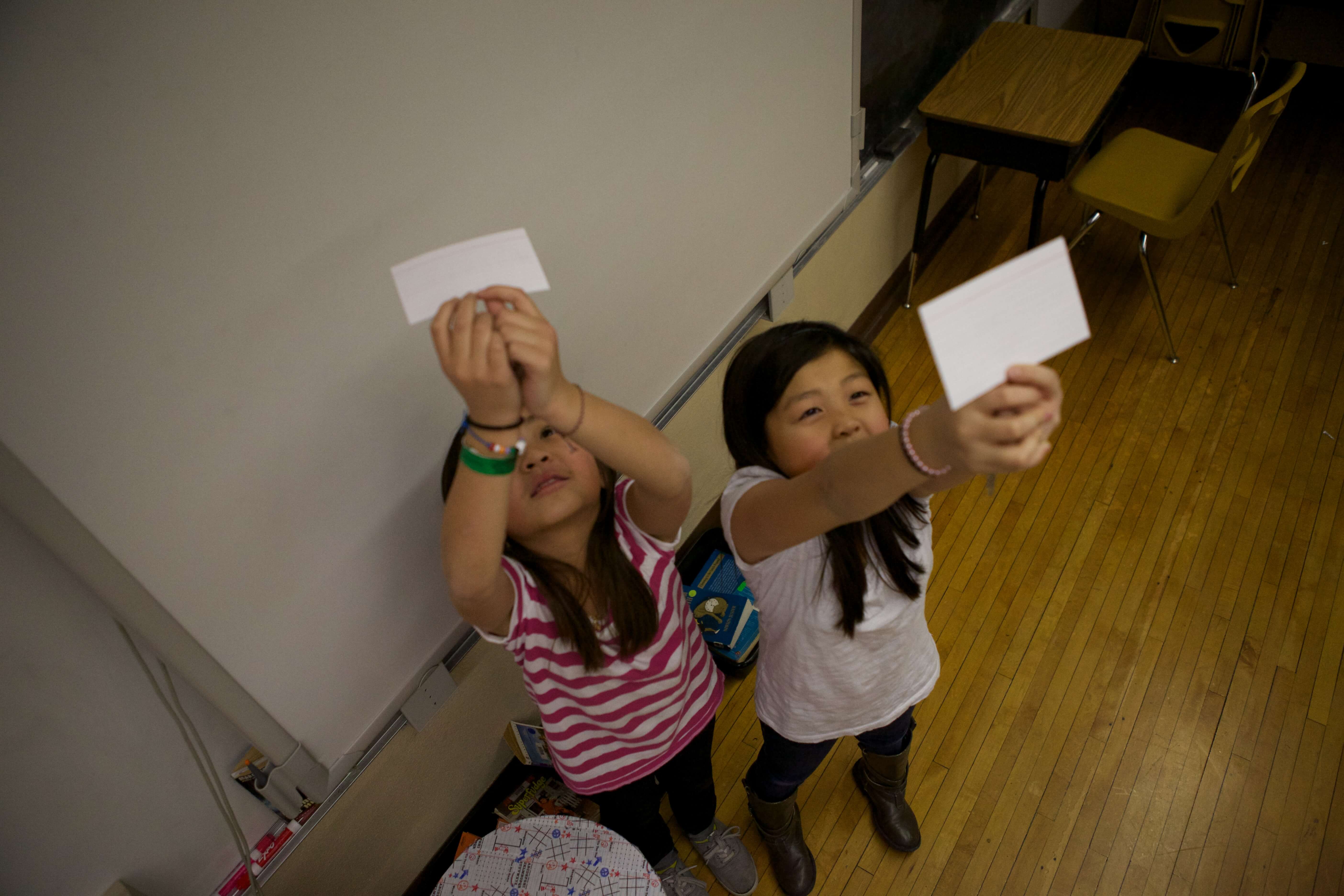
Provide students with index size paper at desk. Ask a Multiple Choice questions (answer A or B, works best) and student writes the answers on one sheet of paper and holds paper up, with two hands overhead to stretch. Teacher checks answers.
 Back to Top
Back to Top
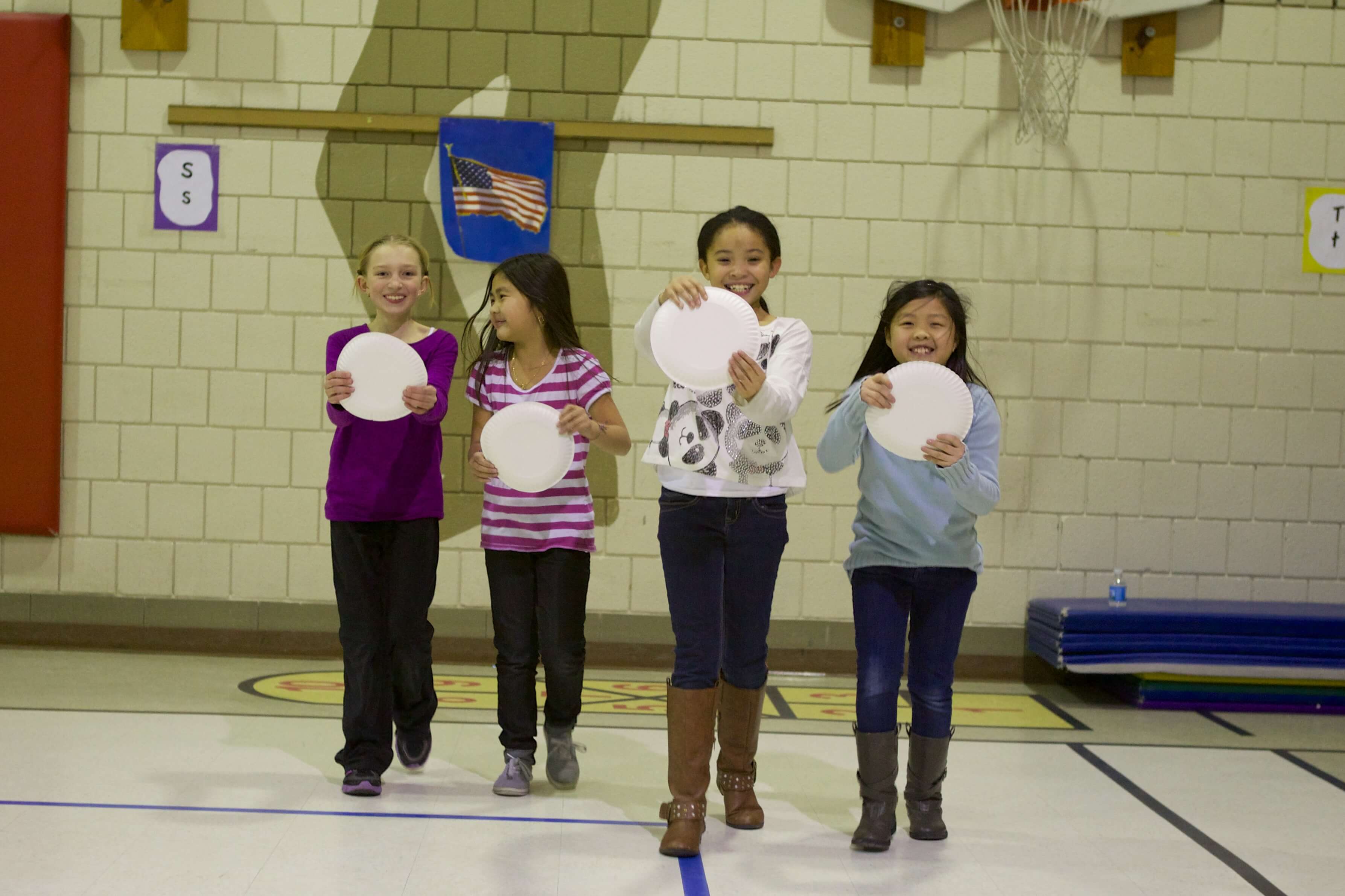
Use a paper plate as a steering wheel. Each student should have their own paper plate and place their hands on either side of the “wheel.” The students will “drive” (walk) around the room, gym space or outdoor area.
The teacher will than say outloud different commands that will cause the students to change their pace or the way they “drive” their vehicle. These commands may include speed bump, stop signs, red/yellow/green light, speed of a police car or fire truck.
 Back to Top
Back to Top
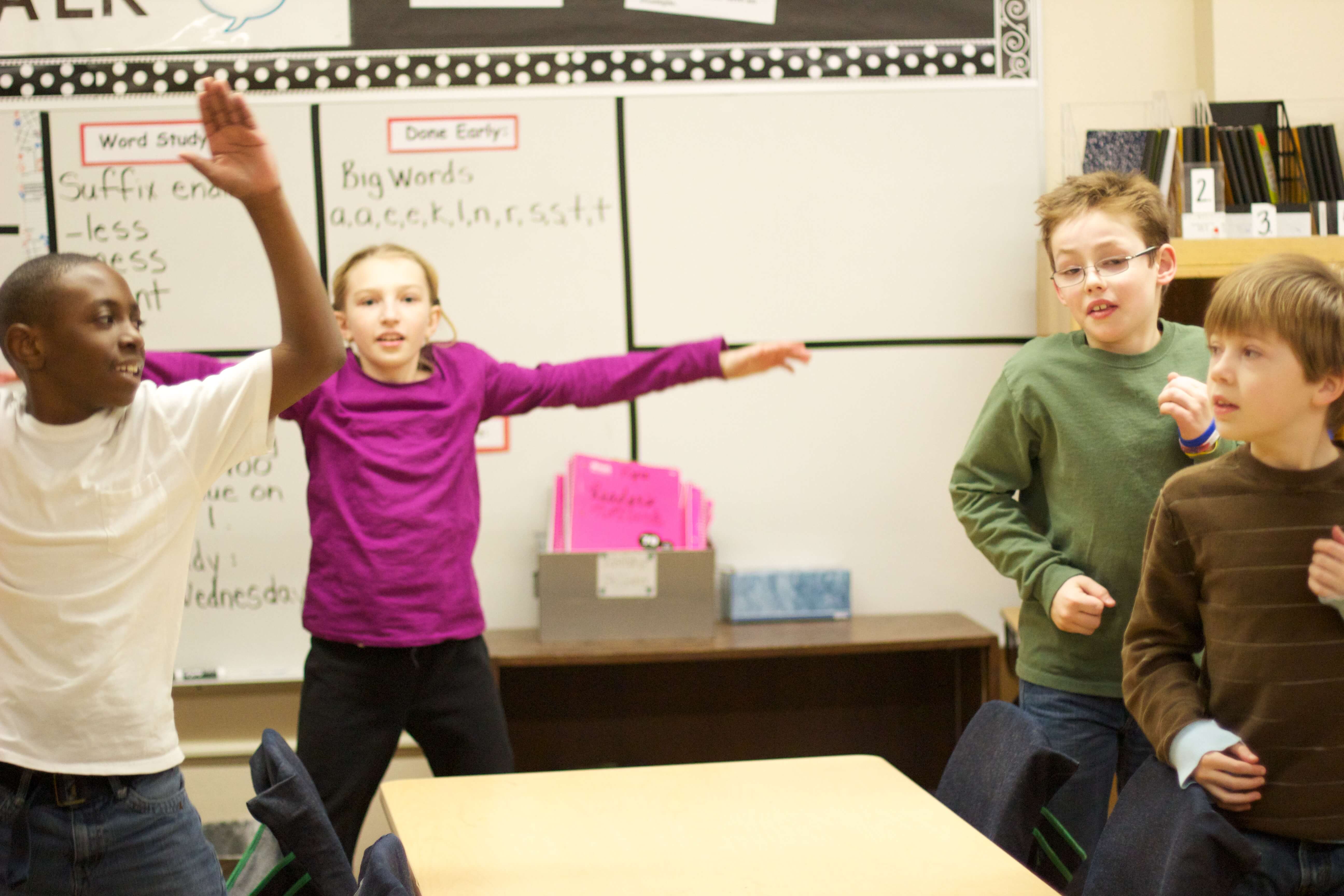
Divide the class in half to review math problems. Each student stands by their desk (paper and pencil on desk). Call out a math problem such as 4+5=. One half of the class jumps 4 times, then the other half jumps 5 times. Each student writes down their own answer. Continue with other math problems, and vary the movements: clapping, touch toes, jumping jacks, side bends, high-knees. Have students pick the movements.
 Back to Top
Back to Top
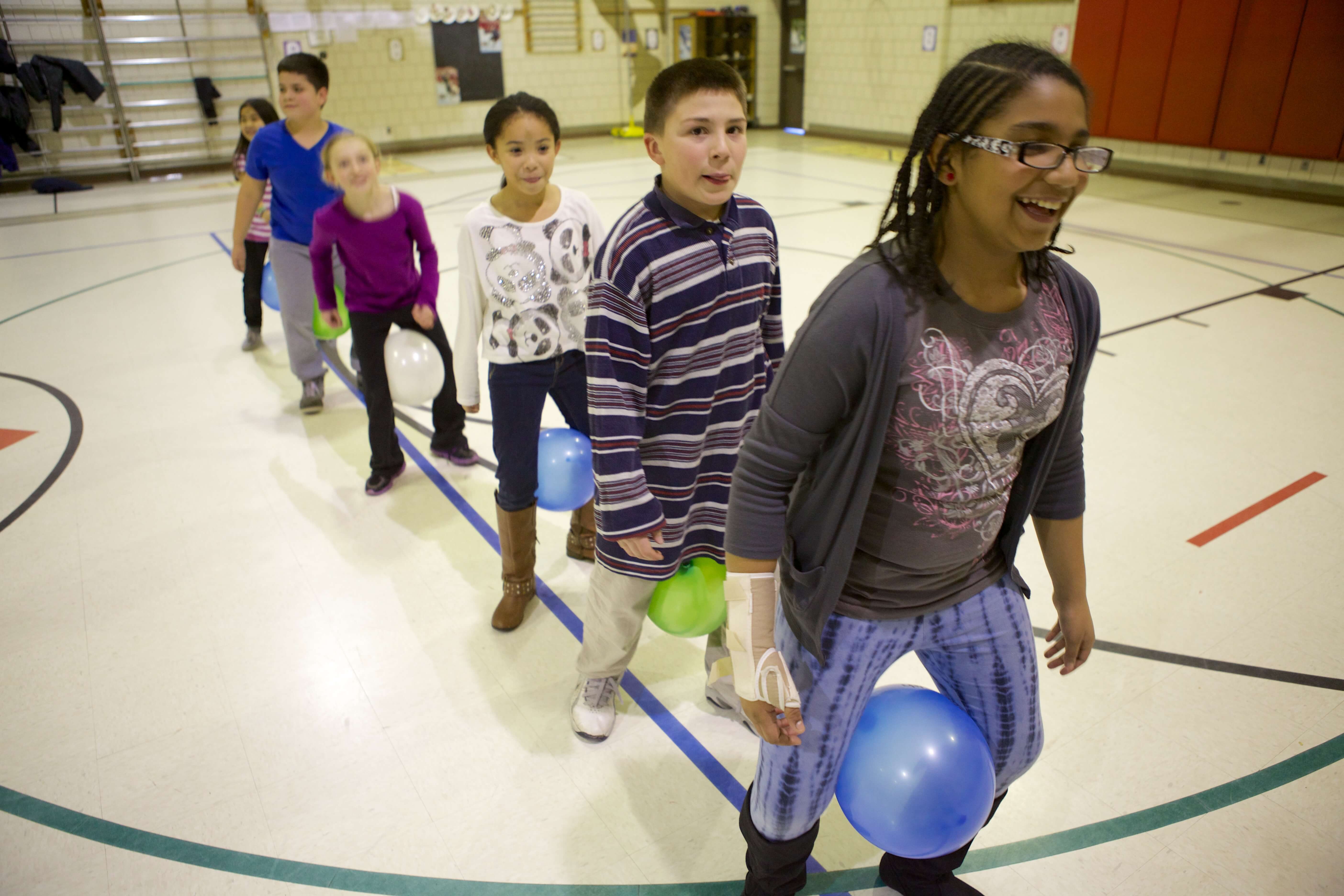
Try a balloon relay. The students can either:
The students need to walk or run a certain distance without letting the balloon touch the ground. If the balloon touches the ground, they would need to go back to the starting place and start over.
 Back to Top
Back to Top
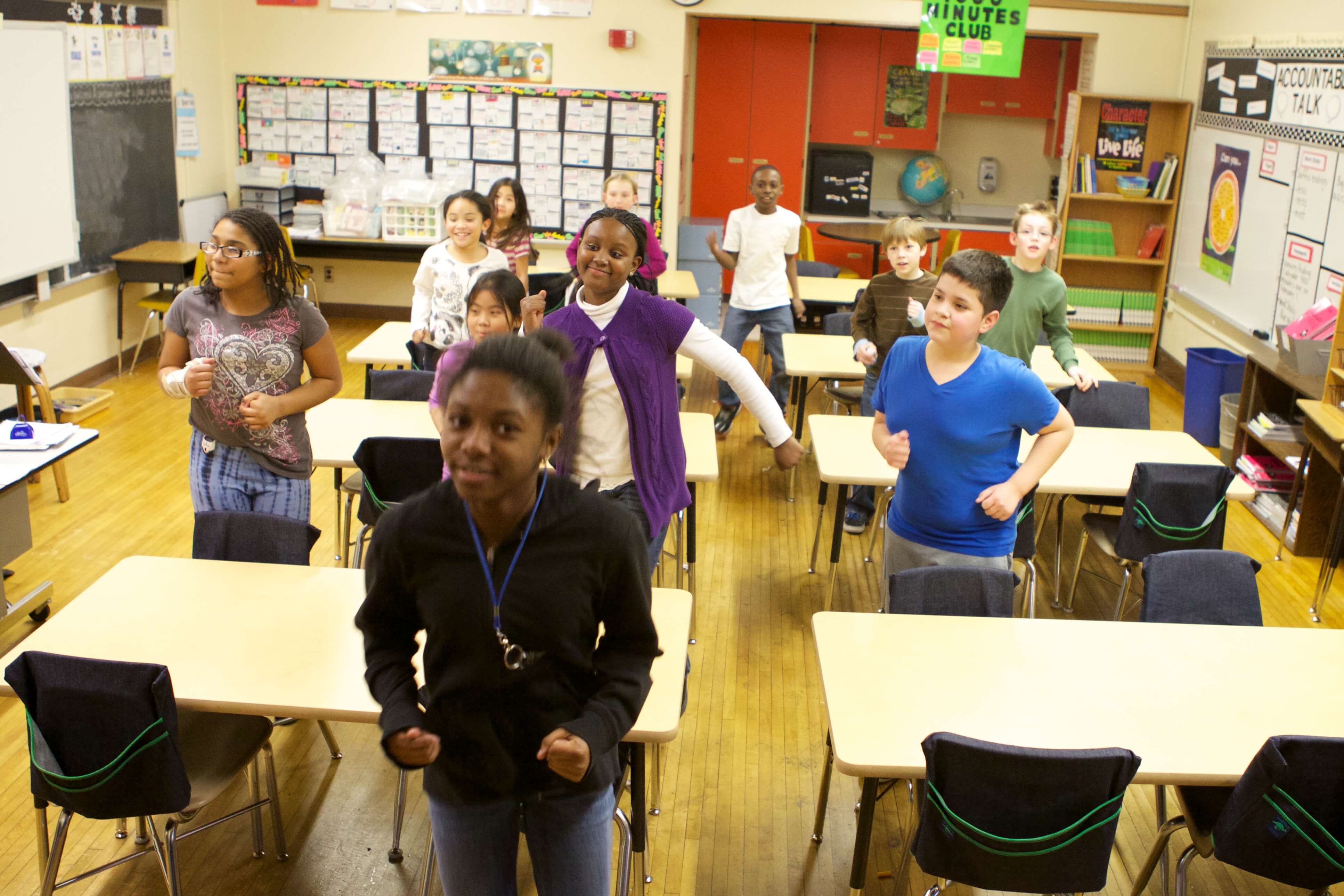
Divide the class in half. Half of the students each write a word on an index card. The other half of the class each writes the definition. Shuffle the cards and hand one card to each student. The students walk around the classroom and match the word with the definition. For younger students, match up sight words, letters or numbers. Also works well with math problems.
 Back to Top
Back to Top
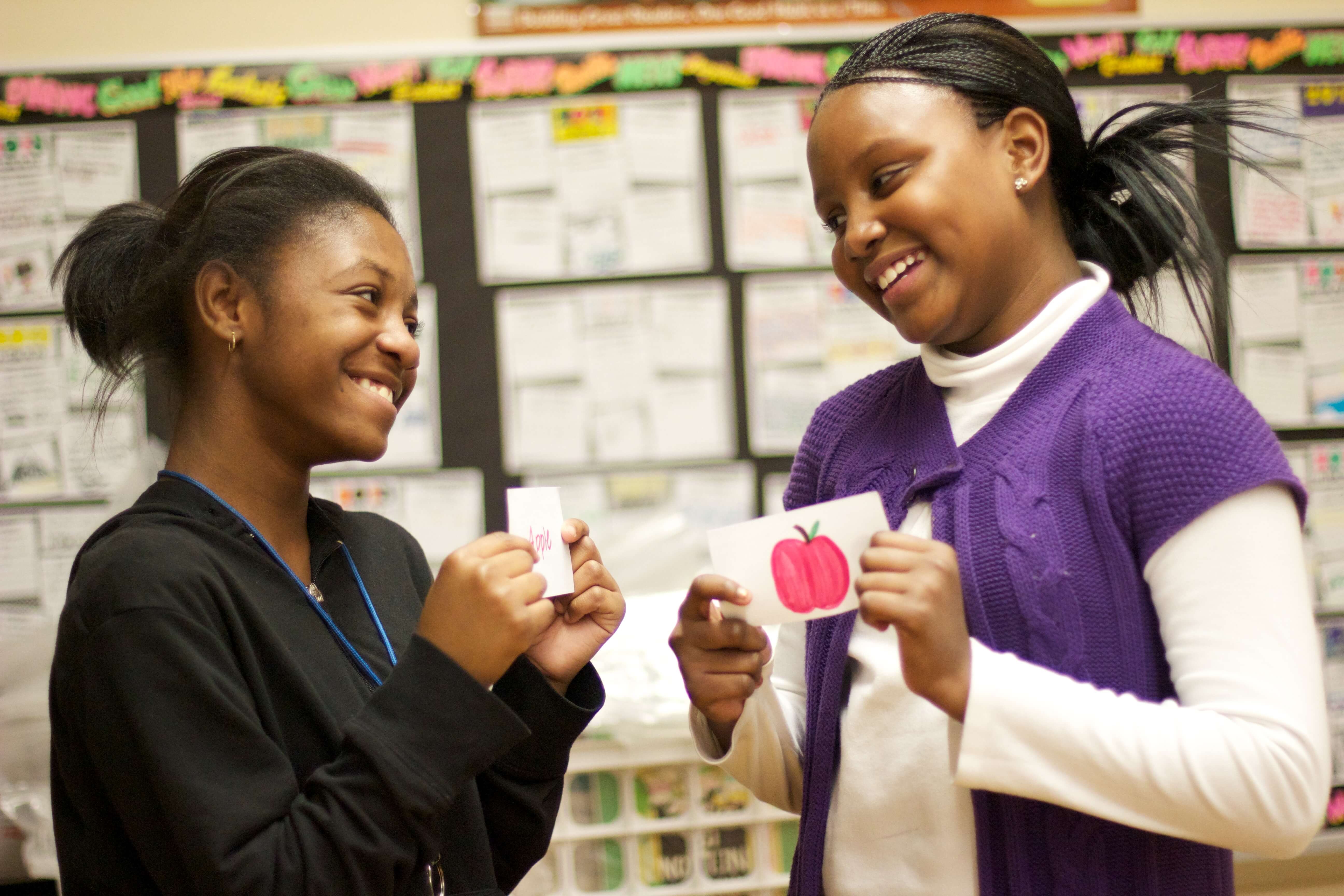
Divide the class in half. Half of the students each write a word on an index card. The other half of the class each writes the definition. Shuffle the cards and hand one card to each student. The students walk around the classroom and match the word with the definition. For younger students, match up sight words, letters or numbers. Also works well with math problems.
 Back to Top
Back to Top
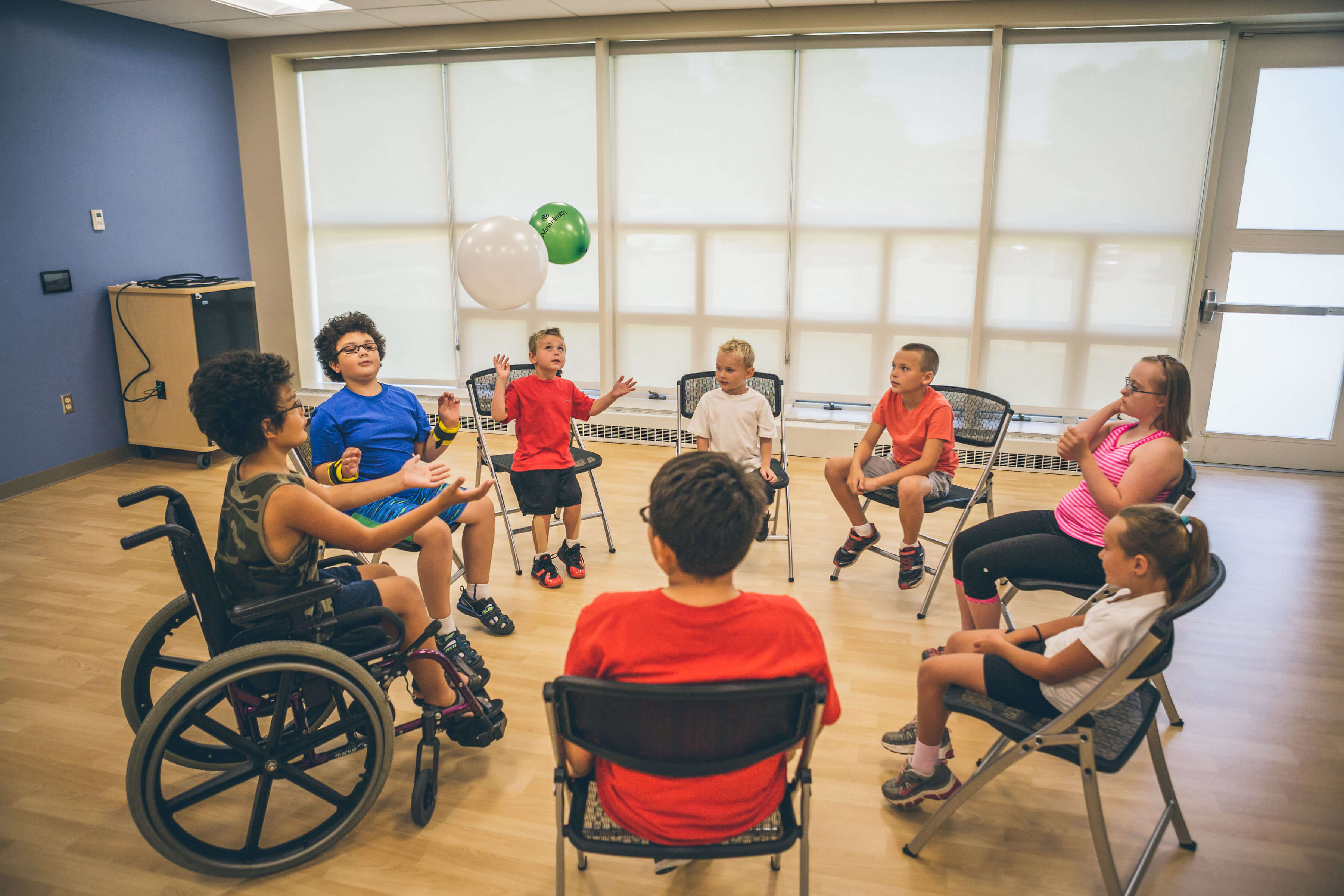
For these games you will need medium to large balloons (any color). Consider latex-free balloons as some students may have allergies to latex.
Divide students into equal groups of 3 to 6 people per group. These games can be done either standing or sitting.
Have the each group form a circle. Using just one balloon, see how many times they can volley the balloon without it hitting the ground or see how long they can keep it in the air (i.e. 1 minute, 2 minutes, etc.) The team that keeps the balloon up the longest wins!
A different version of this game would be to add a second balloon to the mix and have the students try the same activity.
Give youth the option to do this from a seated position so individuals who use a wheelchair can join in the fun, too!
 Back to Top
Back to Top
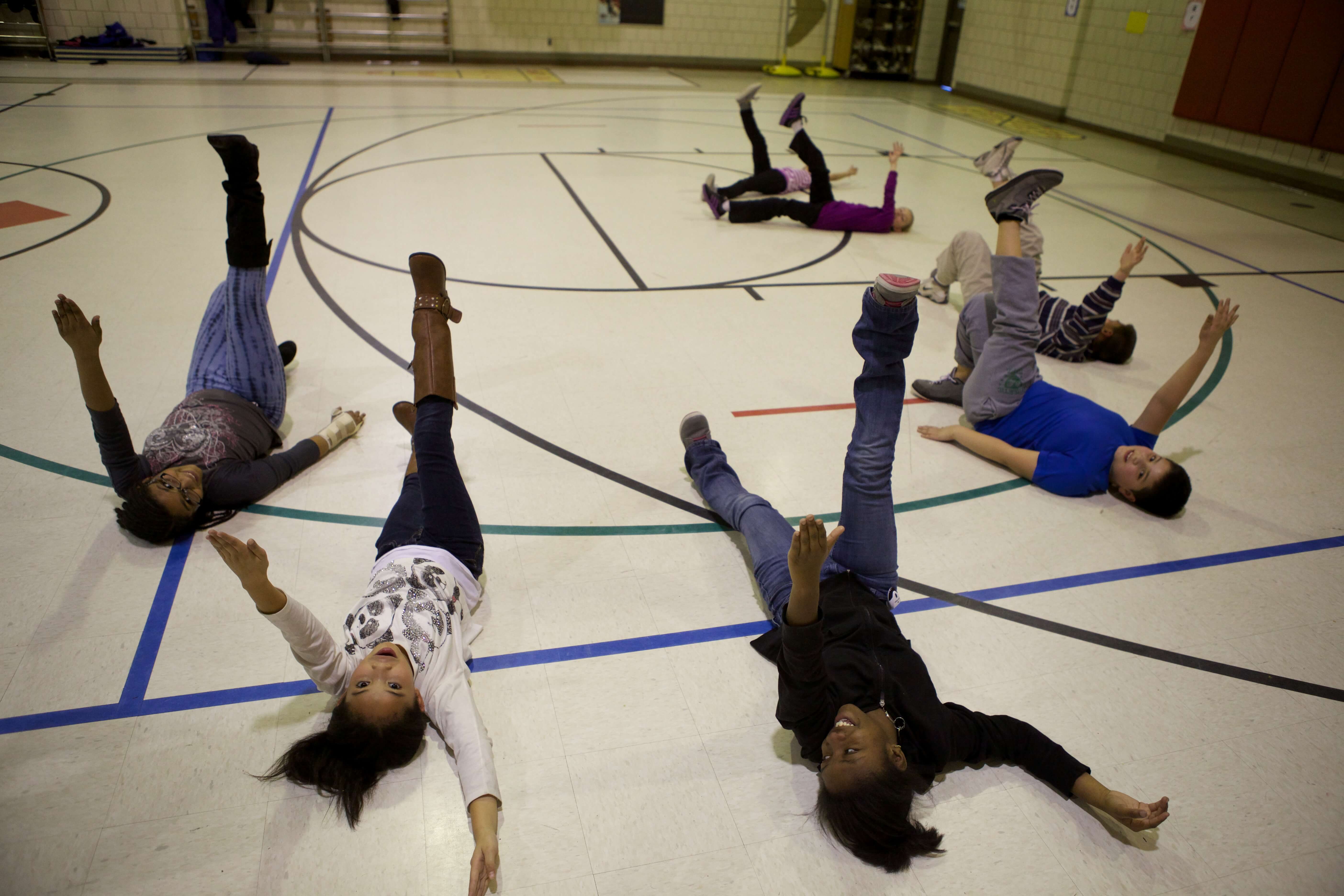
Have students lie on their back with arms and legs straight up in the air. Instruct them to tighten their abdominal muscles or pull their belly button in (engage abs), then have students lower their right leg and left arm at the same time while leaving their opposite arm and leg in a stationary position. Instruct them to switch back and forth and remember to keep breathing.
 Back to Top
Back to Top
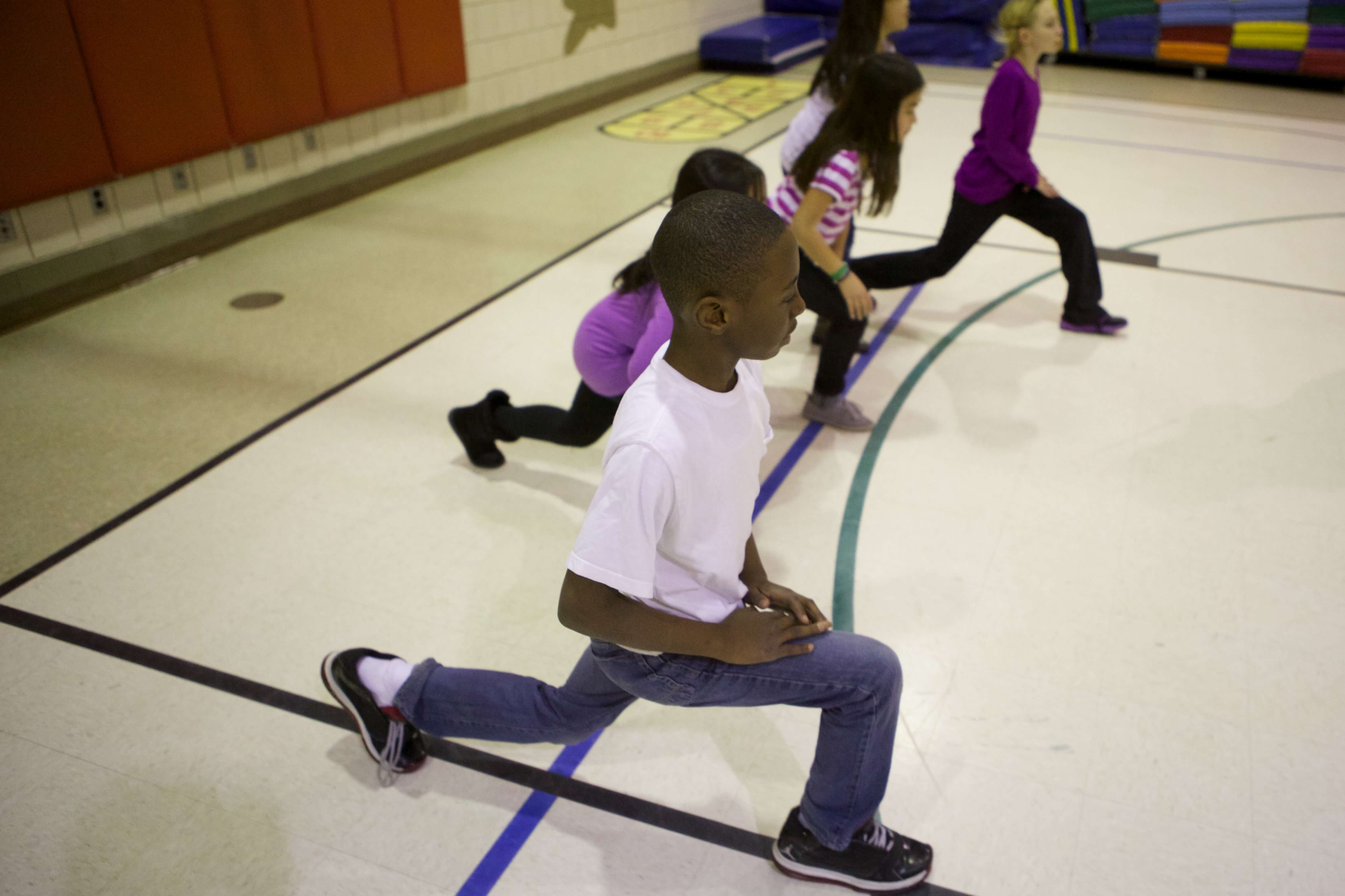
Instruct students to stand with their feet shoulder width apart and their hands on their hips. Have them be sure to keep their stomach muscles tight and their back straight in line with your hips. Tell them to lunge forward with one foot, being sure to keep the knee straight in line with the ankle. Remind them not to let the knee go over the toe when they lunge. Have them slowly squat down, gently touching their back knee to the ground, and slowly raise their body back to standing. Step forward and repeat with the opposite leg in front. They can perform the lunges in place, or they can start at one end of the hallway or gymnasium and perform the exercise across the space available. To make the exercise more challenging, students can put their hands above their heads, or even hold a medicine ball, or a heavier object to add more resistance.
 Back to Top
Back to Top